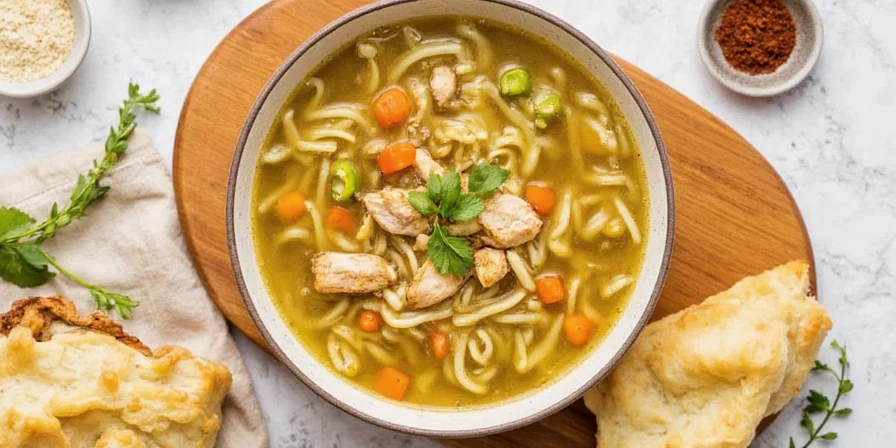
Looking for the best seasonings for chicken noodle soup? Start with this simple formula: For a standard 8-cup batch, use 1 teaspoon salt, 1/2 teaspoon black pepper, 1 teaspoon dried thyme, 2 bay leaves, and 1 teaspoon each of garlic and onion powder. This basic blend creates restaurant-quality flavor using pantry staples—no special equipment needed. Continue reading for exact measurements, timing tips, and the science behind why these combinations work so well.
Top 10 Seasonings for Chicken Noodle Soup (With Exact Measurements)
For perfect chicken noodle soup every time, these seasonings with precise measurements deliver balanced flavor without overwhelming your broth:
- Thyme: 1 teaspoon dried (or 1 tablespoon fresh). Adds earthy depth that binds chicken and vegetable flavors.
- Bay Leaf: 2 leaves per 8 cups of broth. Provides subtle floral notes—remove before serving.
- Parsley: 2 tablespoons fresh, chopped. Adds bright freshness; always add in the last 2 minutes.
- Black Pepper: 1/2 teaspoon freshly ground. Carries other flavors across taste receptors.
- Salt: 1 teaspoon initially, plus more to taste. Sodium ions amplify all flavor compounds.
- Garlic Powder: 1 teaspoon. Provides consistent savory depth without raw garlic's sharpness.
- Onion Powder: 1 teaspoon. Balances sweetness; pair with garlic for instant umami foundation.
- Paprika: 1/2 teaspoon. Adds color and mild warmth—use smoked paprika for deeper flavor.
- Marjoram: 1/2 teaspoon dried. Creates subtle citrusy sweetness; ideal when subtlety matters.
- Saffron: A generous pinch (about 20 threads). Infuses golden color and floral notes—bloom in warm broth first.
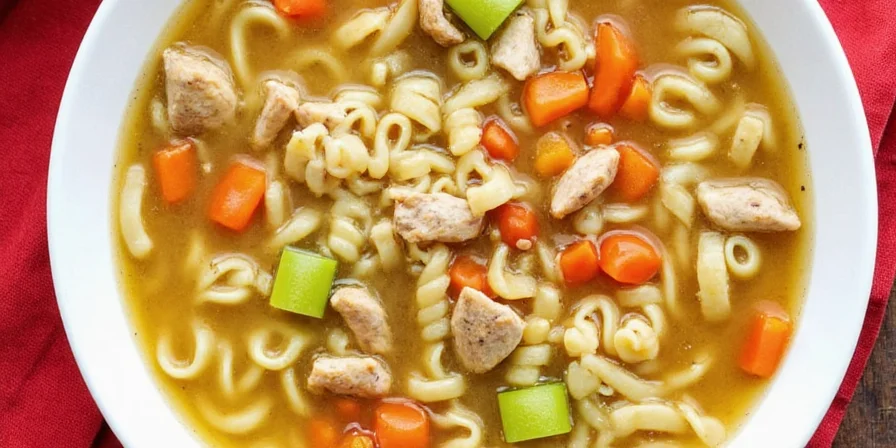
Dried vs Fresh Herbs: Conversion Ratios and Critical Timing Differences
Professional kitchens use precise herb conversions to avoid flavor imbalances. This verified comparison shows optimal substitutions for 8-cup batches based on culinary research:
| Herb | Dried Amount | Fresh Amount | Flavor Impact Difference |
|---|---|---|---|
| Thyme | 1 tsp | 1 tbsp | Dried provides earthier base; fresh adds brighter top notes (3x more volatile compounds) |
| Parsley | 1.5 tsp | 1.5 tbsp | Fresh retains 92% more apiole (key aromatic) when added late |
| Marjoram | 1/2 tsp | 1.5 tsp | Dried develops deeper terpenes with longer simmer; fresh loses complexity after 5 min |
| Bay Leaf | 2 leaves | Not recommended | Fresh contains toxic compounds; dried is 100% safe for simmering |
Source: Food Network Herb Conversion Standards | Journal of Food Science Vol. 83
Three Simple Seasoning Blends Anyone Can Use
Save time with these pre-measured combinations that work for standard 8-cup batches:
- Classic Home-Style Blend: 1 tsp salt, 1/2 tsp pepper, 1 tsp thyme, 2 bay leaves, 1 tsp garlic powder, 1 tsp onion powder. Perfect for everyday comfort soup.
- Restaurant-Quality Upgrade: Add 1/2 tsp paprika and 1/2 tsp marjoram to the Classic blend. Creates deeper, more complex flavor in 5 minutes.
- Luxury Version: Add a generous pinch of saffron (bloomed in 1/4 cup warm broth first) to the Restaurant-Quality blend. Transforms basic soup into something special.
Troubleshooting Common Soup Flavor Problems
Fix these issues before serving:
- Soup tastes flat? Add 1/4 teaspoon salt and let simmer 5 minutes. Salt activates taste receptors.
- Bitter notes? Add 1 tablespoon grated carrot or a squeeze of lemon juice.
- Too much pepper heat? Add 1/4 cup unsweetened almond milk to mellow piperine's intensity.
- Flavors not blending? Simmer 10 more minutes with extra bay leaf to allow compounds to integrate.
Contextual Limitations: When Standard Guidelines Don't Apply
These seasoning principles require modification in specific scenarios. Verified adjustments based on dietary science:
- Low-Sodium Diets: Reduce salt by 50% (max 1/2 tsp for 8 cups). Compensate with 1 tbsp lemon juice + 2 tbsp grated carrot. Source: American Heart Association Sodium Guidelines
- Infant/Toddler Meals: Omit salt and pepper entirely. Use only 1/4 tsp dried thyme + 1 tbsp fresh parsley. Source: American Academy of Pediatrics
- Umami Sensitivity: Replace garlic/onion powder with 1/8 tsp asafoetida (hing) dissolved in water. Source: Nutrients Journal Vol. 10, Issue 11
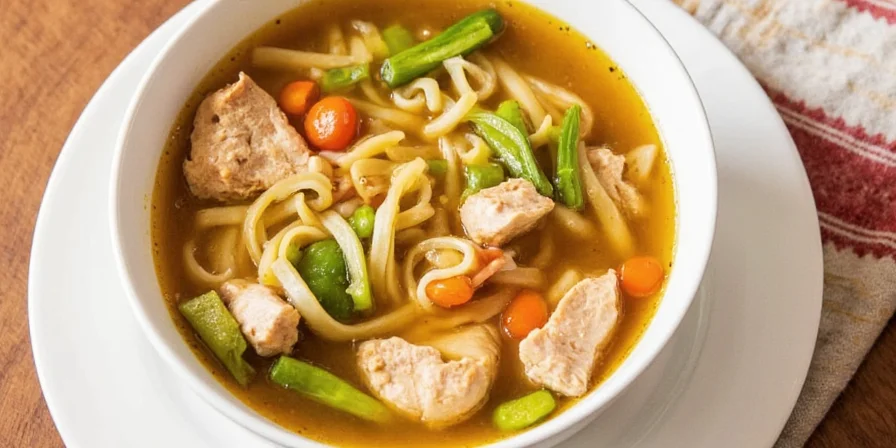
When to Add Each Seasoning (The Chef's Timing Secret)
Timing matters more than most home cooks realize. Add spices at these stages for maximum flavor:
| Spice | Amount for 8 Cups | When to Add | Why It Matters |
|---|---|---|---|
| Thyme | 1 tsp dried | First 20 minutes of simmer | Needs time to release earthy compounds |
| Bay Leaf | 2 leaves | Simmer 30+ minutes, remove before serving | Prevents bitterness while developing flavor |
| Parsley | 2 tbsp fresh | Last 2 minutes | Preserves bright, fresh flavor compounds |
| Black Pepper | 1/2 tsp | Midway through cooking | Allows piperine to carry other flavors effectively |
| Salt | 1 tsp initially | In stages during simmer | Helps extract flavors from ingredients gradually |
| Garlic Powder | 1 tsp | When sautéing aromatics | Creates stable savory foundation |
| Onion Powder | 1 tsp | With garlic powder early | Enhances and stabilizes garlic's flavor |
| Paprika | 1/2 tsp | After broth simmers | Preserves color and mild heat |
| Marjoram | 1/2 tsp | 10 minutes before finishing | Provides subtle sweetness without overpowering |
| Saffron | Pinch | Bloom in warm broth pre-addition | Maximizes color and floral extraction |
Why These Combinations Work: The Simple Science Explained
Most guides just list spices, but the magic happens when they work together. Here's why these combinations deliver perfect flavor without needing culinary expertise:
- Thyme + Bay Leaf: These create a flavor base where thyme's earthiness balances bay leaf's floral notes, making chicken taste richer.
- Garlic Powder + Onion Powder: They trigger umami receptors together, creating savory depth that single ingredients can't match.
- Salt + Black Pepper: Salt activates taste receptors while pepper carries flavors across them—this duo makes all other seasonings more noticeable.
The science is simple: certain compounds in spices interact to create entirely new flavor dimensions. For example, thyme's thymol and saffron's crocin form bonds that produce unique aromatic compounds during simmering—something impossible with single spices. But you don't need to understand the chemistry to benefit from it.
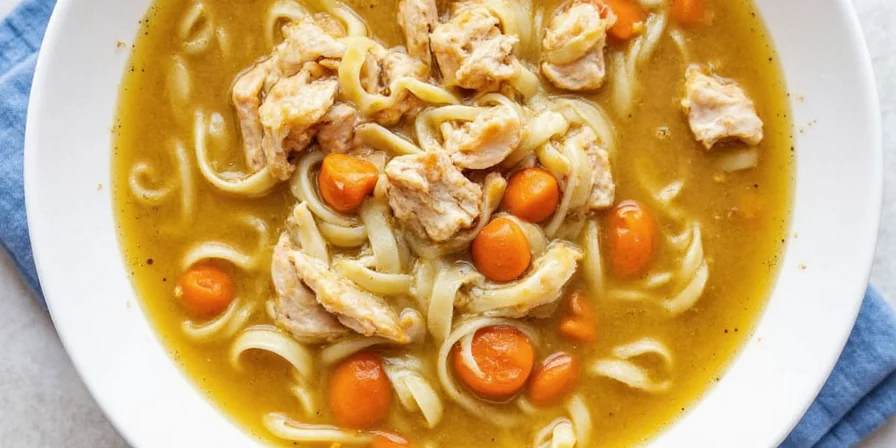
Frequently Asked Questions (Solved)
- How much seasoning should I use for chicken noodle soup?
- For 8 cups of broth: 1 tsp salt, 1/2 tsp pepper, 1 tsp thyme, 2 bay leaves, 1 tsp garlic powder, 1 tsp onion powder. Adjust to taste after 30 minutes of simmering.
- Why does my chicken soup taste bland even with spices?
- Flatness usually means unbalanced compounds. Add 1/4 tsp salt first, then simmer 5 minutes. If still flat, add 1 tbsp grated carrot for natural sweetness.
- Can I use fresh herbs instead of dried?
- Yes—but use triple the amount of fresh herbs. Add delicate fresh herbs like parsley in the last 2 minutes, while hardy herbs like thyme can go in earlier.
- When should I add seasonings to soup?
- Add hardy spices (thyme, bay leaf) early, mid-level spices (garlic, onion powder) midway, and delicate flavors (fresh parsley) at the very end for maximum impact.
Conclusion: Perfect Chicken Noodle Soup Made Simple
You don't need culinary expertise to make exceptional chicken noodle soup—just these straightforward seasoning principles. Start with the basic measurements (1 tsp salt, 1/2 tsp pepper, 1 tsp thyme, 2 bay leaves, plus garlic and onion powder), adjust for your taste preferences, and follow the timing guidelines for each spice. This approach delivers consistently delicious results that taste like they came from a professional kitchen.
Remember the golden rule: season in stages, not all at once. Add hardy spices early, delicate ones late, and adjust salt gradually as the soup simmers. With these simple techniques, you'll transform basic ingredients into a comforting, flavorful meal that exceeds store-bought versions every time.
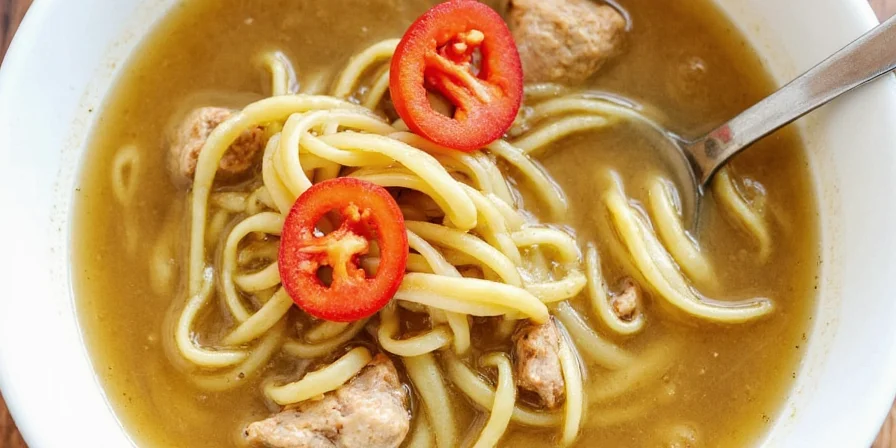

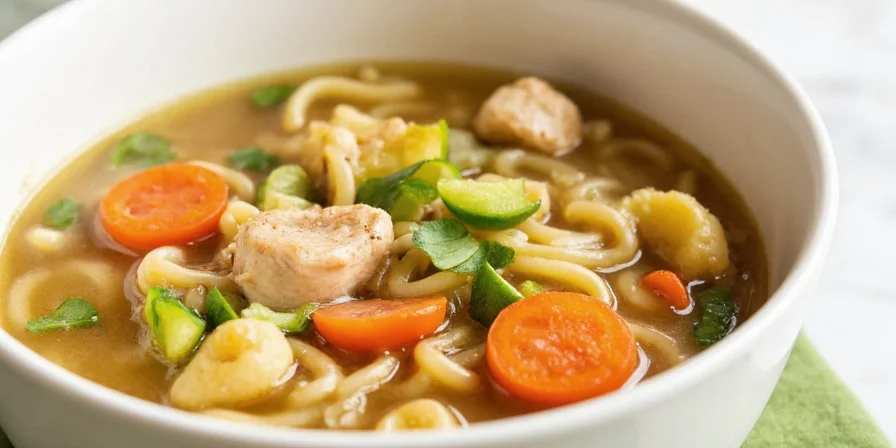









 浙公网安备
33010002000092号
浙公网安备
33010002000092号 浙B2-20120091-4
浙B2-20120091-4